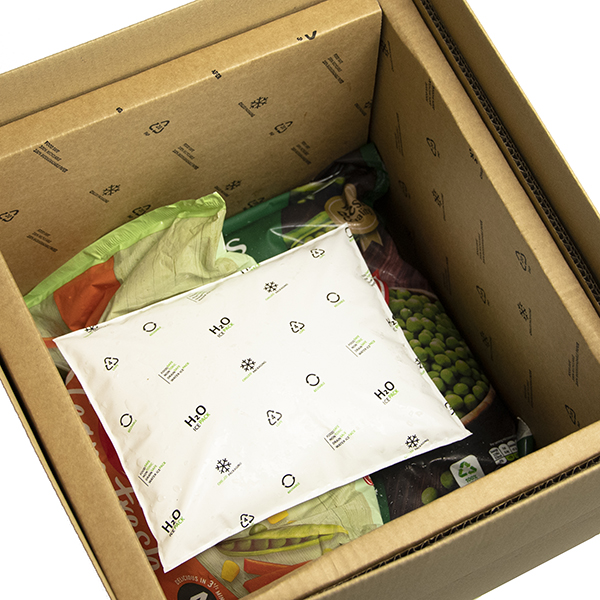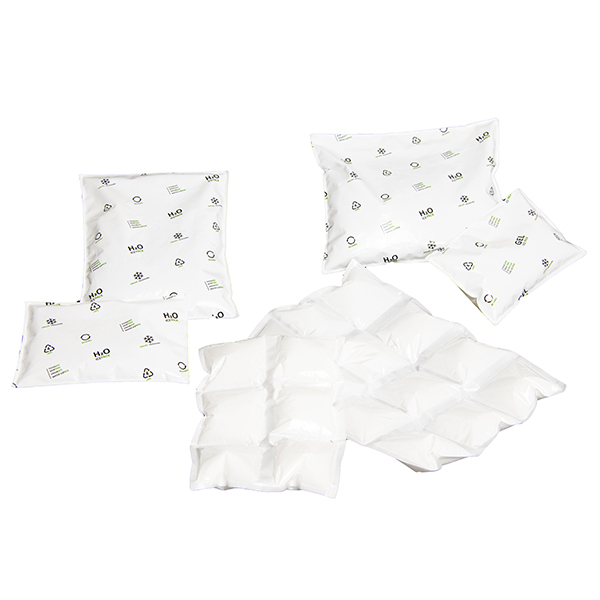Kite blog
How can I be eco-friendly when packaging chilled goods?
Food, fish or pharmaceutical businesses depend on ice packs to keep their produce cool during transportation. A failure to do this would spoil their products, hence this form of packaging is integral to the success of their company. It is important to find a solution that works for the weight of items you deliver. Likewise, it is important to minimise the environmental impact of these coolants wherever possible. Thankfully, Kite has recently released water ice packs and corrugated box liners that are designed to happily fulfil both crucial requirements.

How does a water ice pack work?
Our new water ice packs closely resemble traditional gel ice packs with the fundamental difference being that the pockets are filled with water rather than gel. To activate a pack, simply freeze the packaging before use. Once frozen, the pack will ensure that the surrounding products are kept chilled during transit, including for overnight shipments. The exact time the pack remain chilled depends on a number of factors, for example external temperature, environment the pack is stored, number of packs used and type of box liner or insulator.To provide this complete level of protection, the coolants should be used in conjunction with our range of insulated boxes, box liners or temperature controlled pouches to reliably keep food fresh. The corrugated box liner is the newest to the range and enjoys 100% recyclability while boasting the same temperature controlling qualities as polystyrene.
How do water ice packs compare to other coolants?

In comparison to the packs, ice sheets have a space saving advantage granted by their ability to arrive flat: to quantify this, five boxes of ice sheets holds the same amount of product as a full pallet of standard gel packs. Furthermore, they could be argued as having greater flexibility thanks to the separate cells that can be moulded around products to conserve space within a package. They also have a different activation method: before freezing, the user must immerse the product in water for approximately 30 seconds. Sadly, they still contain gel rather than a clean resource such as water.
Why are gel packs less sustainable than water packs?
For low use, you can theoretically pour the contents of gel packs down a domestic drain. That is not to say that this is advised. The gel is comprised of an absorbent plastic polymer that is mixed into water, therefore, by adding it to our water cycle, we risk introducing microplastics into our environment during disposal.
What is the problem with microplastics?
Plastic does not bidegrade but merely breaks down into ever smaller pieces which then have a greater chance of entering our waterways. Moreover, smaller particles are considerably more difficult to remove from the environment; where litter pickers may be effective tools at a beach clean-up, there is no simple or low-cost answer to removing microplastics. These plastics can be toxic if consumed by the animals living in our oceans. The potential impact on humans has not yet been researched.Fortunately, all of Kite’s ice packs are reusable meaning that the environmental impact can be significantly reduced if they are used internally and not regularly disposed of. However, if your company ships products externally, then the best way to be sure that the end user is not polluting the environment with microplastics is to make the switch to our low-cost, equally effective water versions.
Explore our chilled packaging range to equip your business with eco-friendly coolants now.
